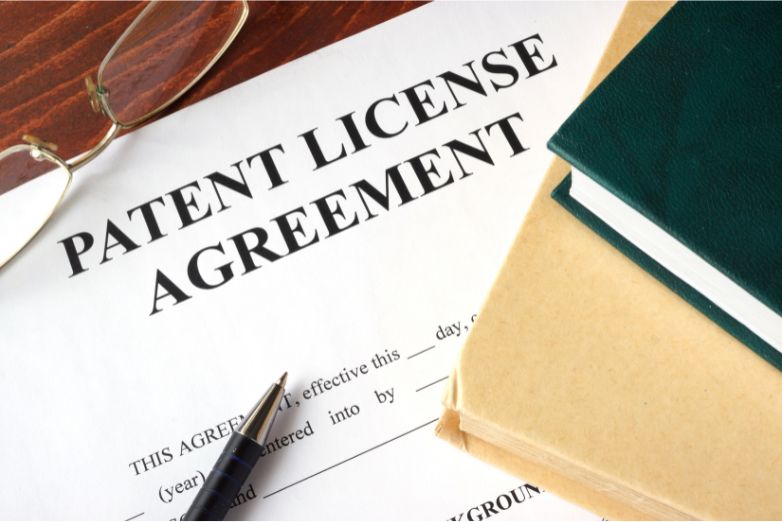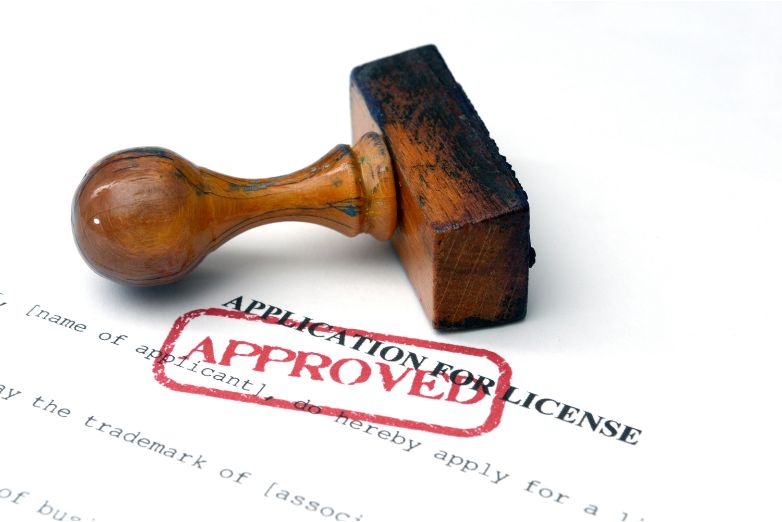The Ultimate Guide to IP Licensing
In today’s fast-paced and competitive business landscape, intellectual property (IP) plays a crucial role in driving innovation and fostering growth. For creators and businesses looking to capitalise on their inventions, brands, and creative works, IP licensing offers a strategic pathway to expand their market reach and generate revenue. This comprehensive guide will delve into the intricacies of IP licensing, exploring its various types, conditions, advantages, and potential pitfalls, while also providing insights into crafting successful licensing agreements and IP strategies.
What is IP licensing?
At its core, IP licensing refers to a contractual arrangement where the owner of intellectual property grants permission to another party to use, produce, sell, or distribute their IP assets in exchange for compensation. This arrangement enables the licensor (IP owner) to monetise their creations while allowing the licensee (the authorised user) to benefit from established brands, patented inventions, copyrighted works, or other intellectual property.
It can occur in two main directions: licensing in and licensing out. When a company licenses in IP, it obtains the rights to use someone else’s intellectual property. On the other hand, licensing out involves the licensor granting rights to external parties to use their IP.
In the IP licensing landscape, two primary entities participate: licensors and licensees. Licensors are the owners of the intellectual property, whether it be patents, trademarks, copyrights, or trade secrets. Licensees, on the other hand, are the individuals or organisations to whom the rights are granted, allowing them to utilise the IP in specific ways, under agreed-upon conditions.
Types of IP licensing
IP licensing can vary significantly depending on the unique needs and goals of the parties involved. Typically, there are three main categories of IP licensing, exclusive IP licensing, non-exclusive IP licensing and sole IP license.
Exclusive IP licensing
In exclusive licensing agreements, the licensor grants sole rights to the licensee, effectively preventing the licensor from granting those rights to any other party. Exclusive licenses can be valuable when the licensee seeks a competitive advantage or when the licensor wants to maintain control over how their IP is used in the market.
Non-exclusive IP licensing
Non-exclusive licensing allows the licensor to grant rights to multiple licensees simultaneously. This type of license offers more flexibility for both parties, as the licensor can continue to exploit their IP and enter into additional licensing agreements with other parties.
Sole IP license
A sole license falls between an exclusive and non-exclusive license. In this arrangement, the licensor retains the right to use the IP alongside the licensee. However, the licensor agrees not to grant the same rights to any other party, ensuring a level of exclusivity for the licensee.
IP licensing conditions and limitations
IP licensing agreements often come with specific conditions and limitations that dictate the scope and extent of the license. These conditions can include:
- Exclusivity: The degree to which the license is exclusive, whether it covers all markets or only specific ones, and for how long.
- Territory: The geographical region where the licensee is allowed to use the IP.
- Enforcement of IP Rights and Ongoing Payments: The procedures for enforcing IP rights and the payment terms, such as royalties or upfront fees.
- Time Period: The duration of the licensing agreement.
- Rights to Future Development: Whether the licensee gains access to future developments or enhancements of the IP.
- Services or Support Provided by Licensor: Any additional services or support the licensor is obligated to provide to the licensee.
- Rights to Assign, Sublicense or Terminate License: The licensee’s ability to transfer the license to another party (assignment), grant sublicenses to third parties, or terminate the license agreement.
What factors go into deciding an IP license’s stipulations
The stipulations of an IP license are crucial and require careful consideration. Some key factors that go into deciding these stipulations include:
- Exclusivity: Determining the level of exclusivity is essential. The licensor may grant exclusivity in specific regions or markets, while reserving the right to use the IP elsewhere.
- Market scope: The licensee’s rights can be limited to certain markets or industries, ensuring focused and strategic utilisation of the IP.
- Territory: Geographical boundaries play a vital role in defining the licensee’s operational area.
- Enforcement of IP rights and ongoing payments: Clearly outlining the procedures for handling IP rights violations and specifying the payment structure is vital for a smooth licensing arrangement.
- Time period: Deciding on the license’s duration is important for both parties, ensuring alignment with business goals and strategies.
- Rights to future development: Considering whether future advancements to the IP will be included in the license is crucial for long-term partnerships.
- Services or support provided by licensor: Clearly defining the support and services provided by the licensor ensures a successful partnership.
- Rights to assign, sublicense, or terminate license: Understanding the rights and limitations of sublicensing or transferring the license adds transparency to the agreement.
The pros and cons of IP licensing
IP licensing comes with its share of advantages and disadvantages. Understanding these can help both licensors and licensees make informed decisions.
The pros of IP licensing
- Expanded market reach: Licensing allows licensors to enter new markets without directly investing in manufacturing, distribution, or marketing.
- Revenue generation: Licensors can generate revenue by monetising their IP assets through licensing fees and royalties.
- Risk mitigation: Licensees can benefit from established brands or patented technologies, reducing the risks associated with developing and launching new products or services.
- Innovation and collaboration: Licensing fosters collaboration between licensors and licensees, leading to innovative product offerings and market-driven solutions.
- Cost-effective: For licensees, obtaining rights through licensing is often more cost-effective than investing in research and development to create their own IP.
The cons of IP licensing
- Loss of control: Licensors may lose some control over how their IP is used, potentially leading to quality issues or brand dilution.
- Competitive concerns: Licensors need to carefully consider the potential competition between licensees and how it might impact their business.
- Royalty dependence: Licensees may become heavily reliant on paying royalties, impacting their profit margins.
- Complexity and negotiation: Crafting and negotiating licensing agreements can be complex and time-consuming, requiring legal expertise and thorough due diligence.
When IP licensing is a bad idea
While IP licensing offers numerous benefits, there are situations where it might not be the most appropriate strategy:
- Ability to commercialise your own IP: If a licensor has the resources and expertise to commercialise their IP successfully, they might prefer to do it themselves rather than licensing it out.
- Preserving brand image: Licensing to companies that might not align with the licensor’s values or quality standards can harm the licensor’s brand image.
- Unreasonable royalties: If a licensor demands excessively high royalties, it may deter potential licensees.
- Weak IP: If the intellectual property is not strong or lacks uniqueness, it may not be attractive for licensing.

IP licensing agreements
Creating well-crafted agreements is critical for a successful partnership and ensure the protection of the rights of both the licensor and licensee. They offer a structured and legal framework that benefits both parties and several factors should be considered during this process.
Accuracy is key
Agreements must be as accurate and precise as possible to avoid uncertainties and potential legal disputes in the future. It is essential for protecting the interests of both parties, ensuring legal compliance, and fostering a positive and trustworthy business relationship. All terms and conditions must be clearly stated and agreed upon by both parties, laying the groundwork for a successful and mutually beneficial arrangement, reducing the likelihood of conflicts and disputes in the future.
Payment structure
Negotiating the payment structure is a crucial aspect of the agreement to provide fair compensation to the IP owner, incentivise innovation, manage financial risk, and foster a successful and mutually beneficial business relationship between the parties involved. It helps ensure that the licensing arrangement is financially viable and aligns with the commercial objectives of both parties.
Notifying the IPO of licensing grants, assignments, or assignation
When engaging in IP licensing, it is essential to comply with relevant regulations and legal procedures. Although properly notifying the Intellectual Property Office (IPO) of any licensing grants, assignments, or changes is not obligatory, it is recommended in order to maintain legal validity and prevent complications down the line, such as the licensee potentially lose some rights. The IPO website provides valuable information on the specific requirements for this process.
Conclusion
IP licensing serves as a valuable tool for creators and businesses to leverage their intellectual property for growth and profitability. By understanding the various types, crafting well-structured agreements, and considering the potential advantages and pitfalls, both licensors and licensees can navigate the complex world of IP licensing successfully. It is crucial to approach licensing agreements with precision and attention to detail, ensuring that all parties involved can maximise the value of their intellectual property while fostering long-term, mutually beneficial partnerships.
Make the most of your IP licensing with Minesoft
As you embark on your IP licensing journey, Minesoft is here to support you with cutting-edge services and tools to optimise your IP strategies. Our solutions, such as PatBase and PatBase Express, can streamline your IP research process, enabling accurate patent searches and analysis. With in-built features such as citation analysis and the recently launched Patent Valuation System, our platforms help innovators and IP specialists make better informed decisions throughout the innovation lifecycle.
In addition, PatBase Analytics offers unlimited analysis of patent documents and generates visual charts and reports to quickly understand a patent landscape. These can be leveraged when identifying potential licensing opportunities and areas of innovation. Take advantage of our services to strengthen your IP portfolio, protect your innovations, and unlock new opportunities in the global market.
Request a demo today and discover how Minesoft can empower your IP licensing endeavours to achieve greater success and profitability.


Comments are closed.